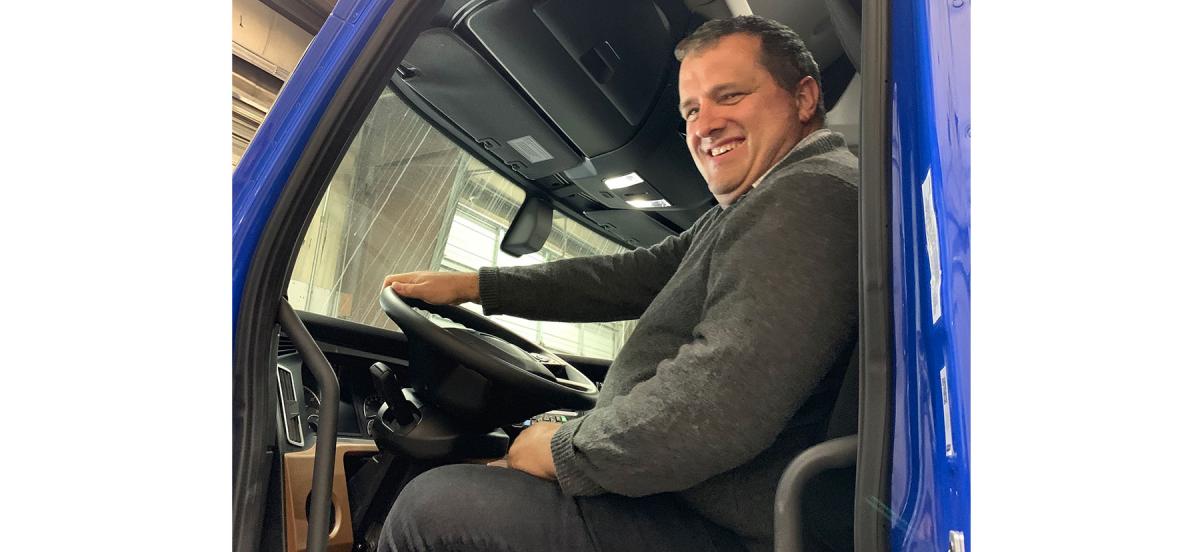Access to Excess

John Botti ’92 in one of the trucks used to transport surplus produce purchased by Farms to Food Banks.
Details
With Farms to Food Banks, John Botti ’92 bridges the divide between surplus crops and hungry Americans.
The demand at food banks across America has spiked since the COVID-19 pandemic began sweeping the nation—increasing by up to 600 percent in some regions and leaving the shelves at many public pantries bare.
Food shortages are not the problem, though. As John Botti ’92 recognizes, hunger is a logistics issue.
Botti, a New York-based investment manager, was stunned by a mid-April ABC News story highlighting the novel coronavirus’s impact on farmers, who have been forced to destroy crops they cannot sell.
“There is a stark juxtaposition of American farmers having their crops go to waste due to supply-chain disruption and economic collapse, while other Americans are on the brink of starvation,” he says. “There is more than enough food, but it is not in the right places.”
Within days of that broadcast, Botti had mobilized a group of friends and launched Farms to Food Banks, a campaign to buy food from struggling farmers and deliver it to hungry New Yorkers. SOAR Transportation donated a refrigerated tractor trailer, and the group’s initial shipment—43,000 pounds of potatoes purchased from an Idaho farm—arrived in the South Bronx, one of the poorest districts in the United States, on April 29. Farms to Food Banks also bought various canned goods to round out its first food boxes, which served 800 families.
Since then, Botti and his partners have connected with farmers growing rice, beans, onions, apples, and other fresh produce, as well as some producing cheese and eggs—and they have no plans to slow down. As of the end of May, their GoFundMe campaign had raised close to $250,000, and the Rotary Club of New York gave a $50,000 grant that will provide local farm produce for 10,000 families in the next two months via free farmers markets in the Bronx and Harlem set up by the nonprofit World Central Kitchen. Farms to Food Banks is also pursuing several grant and joint venture opportunities in order to expand their impact with community partners.
By the end of May, more than 12,500 people had been fed and tens of thousands of pounds of farm produce delivered. As weekly food deliveries and distributions continue, these numbers will only increase.
“There’s been a real outpouring of support— people reaching out in acts of kindness to see how they could help,” Botti says. “Other truckers, storage facilities, volunteers—it’s really been quite a response. In this time of darkness, we wanted to light a candle and show people what’s possible so that on a local, decentralized basis, other communities could take that example and do it there.”
Nearly 30 years out from graduation, Botti says his Haverford experience continues to inspire him. He recalls asking Marilou Allen, longtime director of the Office of Service and Community Collaboration, during his freshman year why the College didn’t have a volunteer homebuilding program. Her response? “Go start one.”
“And I did,” says Botti, who went on to found Housing Outreach Action Project, through which more than 1,000 Haverford students have spent their spring breaks building homes for low-income families. Allen’s challenge sticks with him today. “It was similar with Farms to Food Banks. I said, ‘Let’s just do it.’”



